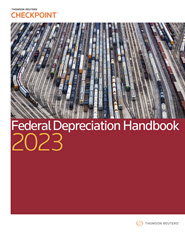California Employers Will Need to Create Workplace Violence Prevention Plans By July 2024
Most California employers have workplace violence and safety policies as part of their Employee Handbooks, but beginning next year, these policies will need to be updated to comply with new, robust requirements. In addition, workplace violence incident logs will need to be maintained, and annual employee training will need to be provided.
SB 553 was signed into law by Governor Newsom on September 30, 2023. Employers have until July 1, 2024 to develop and implement compliant Workplace Violence Prevention Plans (WVPP) and training materials.
The new WVPP requirements are similar to many of the aspects of the more general Injury and Illness Prevention Program (IIPP) already required by existing regulations. The new law requires employers to develop specific procedures and employee training to identify and respond to workplace violence and various types of threats of violence.
Employers can choose to update their IIPP to include a specific workplace violence section, or they can develop a standalone WVPP.
An employer’s WVPP must be in writing and must describe:
- Identification of the names or job titles of individuals at the company who are responsible for implementing the plan
- “Effective procedures” to:
- obtain the active involvement of employees and employee representatives to implement and develop the plan
- report workplace violence and respond to reports
- communicate with employees about workplace violence
- respond to actual or potential workplace violence emergencies
- Training procedures
- Procedures to identify and evaluate workplace violence hazards;
- Post-incident response and investigation procedures
- Procedures to review and revise the plan as needed at least annually, when a deficiency becomes apparent, or after an incident
The employer will be required to develop and maintain incident logs for at least five years.
Employers will also be required to provide specified training when the new plan takes effect as well as annually.
Enforcement may include citations and civil penalties.
Some employer types are exempt, subject to compliance with other existing regulations, including health care facilities, Department of Corrections and Rehabilitation facilities, teleworking employees, and small employers with fewer than 10 employees at workplaces that are not accessible to the public are exempt (subject to compliance with other regulations).
The legislation requires Cal/OSHA to develop and adopt a set of standards for the plan required, but the deadline is not until December 31, 2026. Cal/OSHA has promulged various model IIPPs. It is unclear whether OSHA will update the IIPPs to incorporate the new requirements, or develop model WVPPs, forms, and training materials, but, if so, it is doubtful those will be published by the July 1, 2024 compliance deadline. Employers are encouraged to consult with their Weintraub employment attorney for assistance with developing the plan, incident logs, and training materials.






